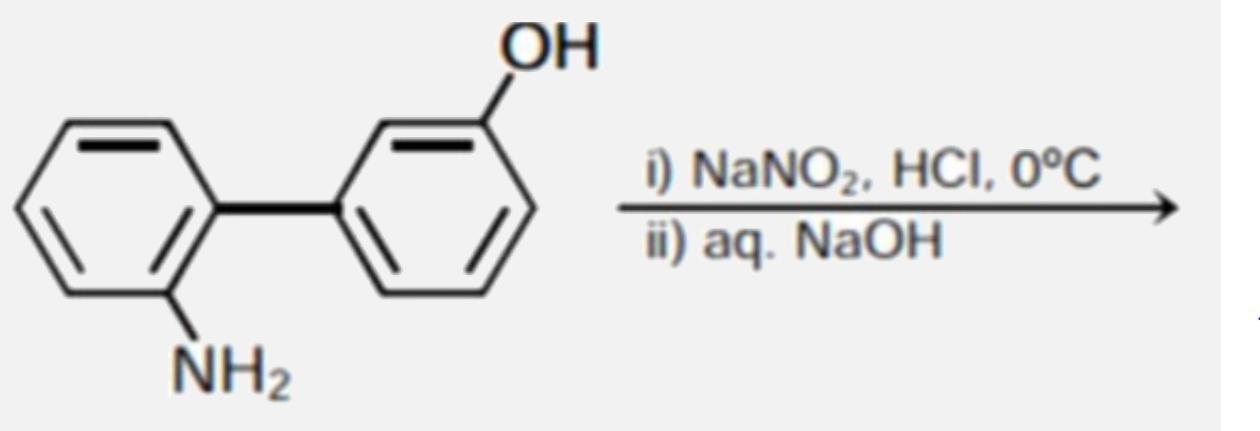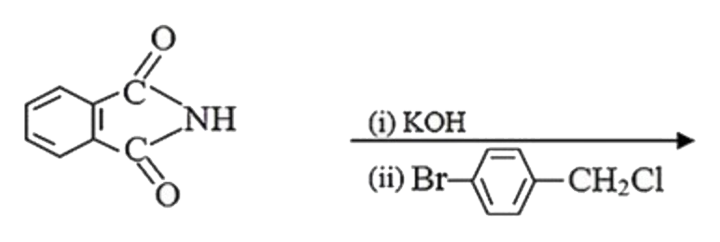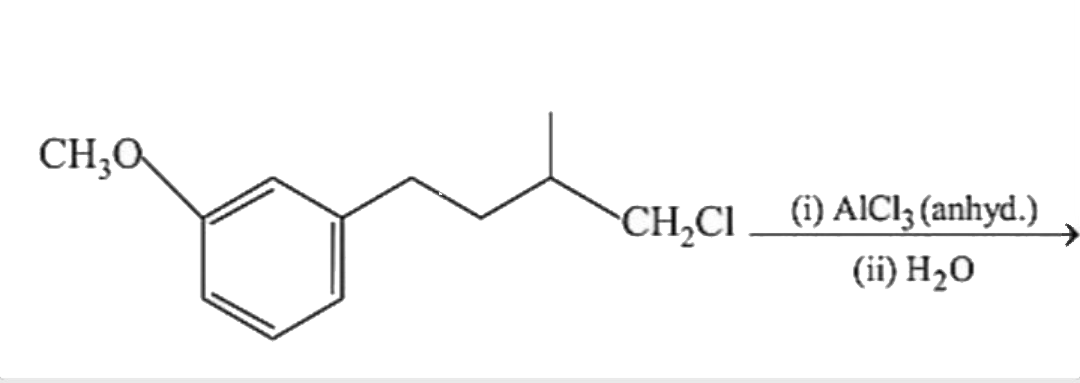Under which of the following reaction condidiotns, aniline give p-nitro derivative as the major product?
Acetyl chloride/pyridine followed by reaction with conc. H2SO4+conc.HNO3
Acetic anhydride/pyridine followed by conc. H2SO4+conc.HNO3
Dil. HCl followed by reaction with conc. H2SO2+conc.HNO3
Reaction with conc. HNO3+conc.H2SO4
The correct Answer is:A, B
To determine under which reaction conditions aniline gives p-nitro derivative as the major product, we will analyze the provided options step by step.
Step 1: Understanding the Reactants
Aniline (C6H5NH2) is an aromatic amine that can undergo nitration to form nitro derivatives. The amino group (NH2) is an ortho-para directing group due to its electron-donating properties.
Step 2: Analyzing the Options
We have four options to consider:
- Option A: Acetyl chloride (CH3COCl) in the presence of pyridine followed by concentrated H2SO4 and concentrated HNO3.
- Option B: Acetic anhydride (CH3CO)2O in the presence of pyridine followed by concentrated H2SO4 and concentrated HNO3.
- Option C: Dilute HCl followed by concentrated H2SO4 and concentrated HNO3.
- Option D: Direct reaction with concentrated HNO3 and concentrated H2SO4.
Step 3: Reaction Mechanism for Options A and B
1. Formation of Acetanilide:
- In both Option A and Option B, aniline reacts with acetyl chloride or acetic anhydride in the presence of pyridine to form acetanilide (C6H5NHCOCH3). This reaction protects the amino group by converting it into an amide, which is bulkier.
2. Nitration Reaction:
- The acetanilide then undergoes nitration when treated with concentrated H2SO4 and concentrated HNO3. This produces the nitronium ion (NO2+), which is the active electrophile in the nitration process.
- Due to the bulky acetamido group (NHCOCH3), the electrophile prefers to attack the para position over the ortho position, leading to the formation of p-nitroacetanilide as the major product.
Step 4: Analyzing Options C and D
- Option C: Using dilute HCl will not convert aniline to acetanilide. The amino group remains as NH2, and when treated with concentrated H2SO4 and HNO3, both ortho and para nitro derivatives will be formed in equal amounts because NH2 is still ortho-para directing without any steric hindrance.
- Option D: Direct nitration of aniline with concentrated HNO3 and H2SO4 will also yield both ortho and para products in equal amounts since the amino group is still available for electrophilic attack without any steric hindrance.
Conclusion
The major product of p-nitro derivative will be obtained under the conditions provided in Option A and Option B. The bulky acetamido group directs the electrophile to the para position, making it the major product.
Final Answer
The correct options are A and B.
Aniline (C6H5NH2) is an aromatic amine that can undergo nitration to form nitro derivatives. The amino group (NH2) is an ortho-para directing group due to its electron-donating properties.
We have four options to consider:
- Option B: Acetic anhydride (CH3CO)2O in the presence of pyridine followed by concentrated H2SO4 and concentrated HNO3.
- Option C: Dilute HCl followed by concentrated H2SO4 and concentrated HNO3.
- Option D: Direct reaction with concentrated HNO3 and concentrated H2SO4.
1. Formation of Acetanilide:
- In both Option A and Option B, aniline reacts with acetyl chloride or acetic anhydride in the presence of pyridine to form acetanilide (C6H5NHCOCH3). This reaction protects the amino group by converting it into an amide, which is bulkier.
- The acetanilide then undergoes nitration when treated with concentrated H2SO4 and concentrated HNO3. This produces the nitronium ion (NO2+), which is the active electrophile in the nitration process.
- Due to the bulky acetamido group (NHCOCH3), the electrophile prefers to attack the para position over the ortho position, leading to the formation of p-nitroacetanilide as the major product.
- Option C: Using dilute HCl will not convert aniline to acetanilide. The amino group remains as NH2, and when treated with concentrated H2SO4 and HNO3, both ortho and para nitro derivatives will be formed in equal amounts because NH2 is still ortho-para directing without any steric hindrance.
- Option D: Direct nitration of aniline with concentrated HNO3 and H2SO4 will also yield both ortho and para products in equal amounts since the amino group is still available for electrophilic attack without any steric hindrance.
The major product of p-nitro derivative will be obtained under the conditions provided in Option A and Option B. The bulky acetamido group directs the electrophile to the para position, making it the major product.
The correct options are A and B.
Topper's Solved these Questions
- AMINESBOOK - NCERT EXEMPLAR ENGLISHCHAPTER - AMINESEXERCISE - SATQ
37 Videos
- AMINESBOOK - NCERT EXEMPLAR ENGLISHCHAPTER - AMINESEXERCISE - LONG ANSWER
3 Videos
- ALDEHYDE, KETONES AND CARBOXYLIC ACIDSBOOK - NCERT EXEMPLAR ENGLISHCHAPTER - ALDEHYDE, KETONES AND CARBOXYLIC ACIDSEXERCISE - Long Answer Type Questions
4 Videos
- BIOMOLECULES BOOK - NCERT EXEMPLAR ENGLISHCHAPTER - BIOMOLECULES EXERCISE - Long Answer Type Questions
5 Videos
Similar Questions
The major product of the following reaction is

View SolutionThe major product of the following reaction is

View SolutionThe major product of the following reaction is

View SolutionThe major product of the following reaction is
View SolutionThe major product of the following reaction is

View SolutionThe major product of the following reaction is
View SolutionThe major product of the following reaction is

View SolutionThe major product of the following reaction is

View SolutionThe major product of the following reaction is

View SolutionThe major product of the following reaction is

View Solution
